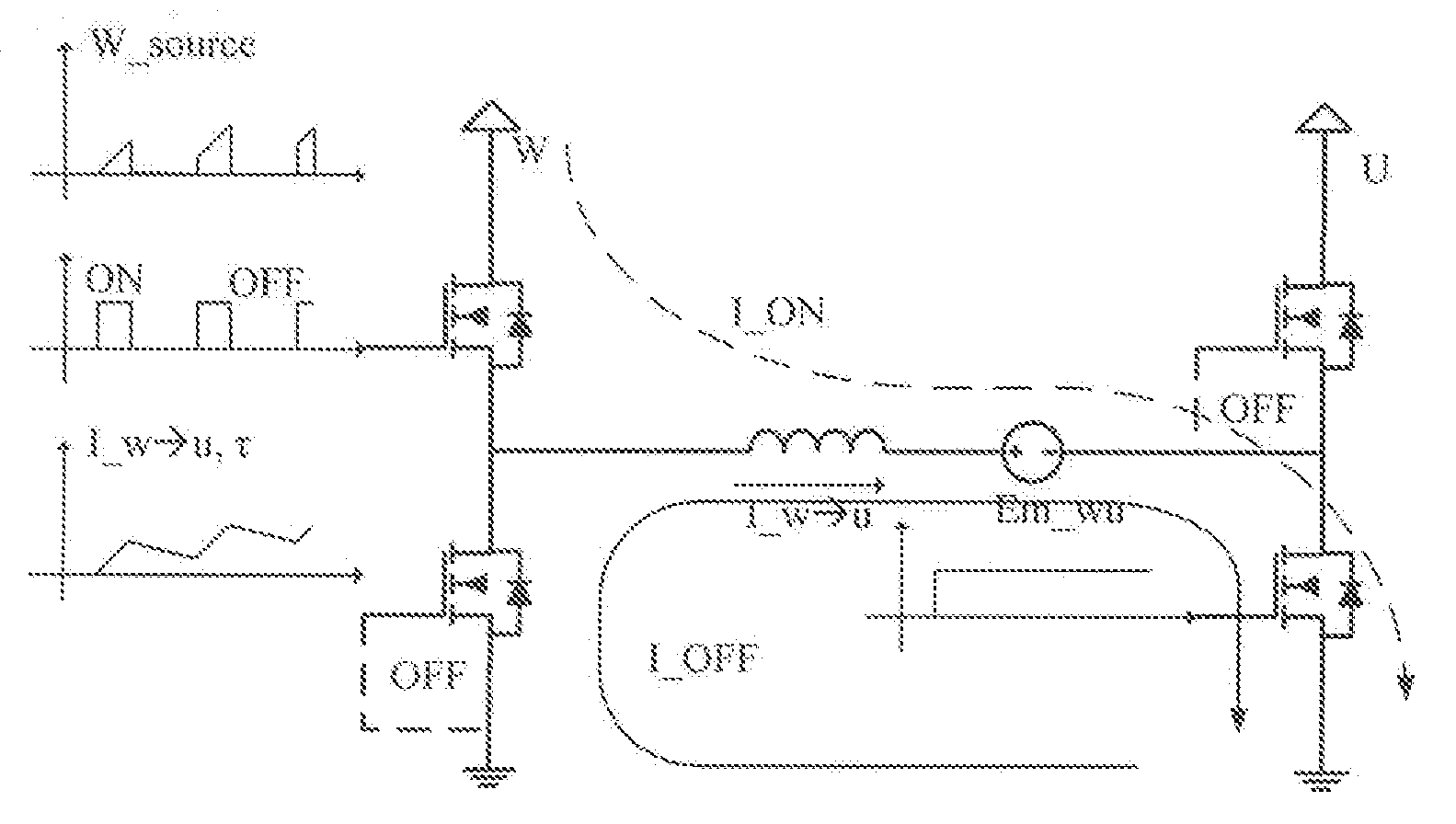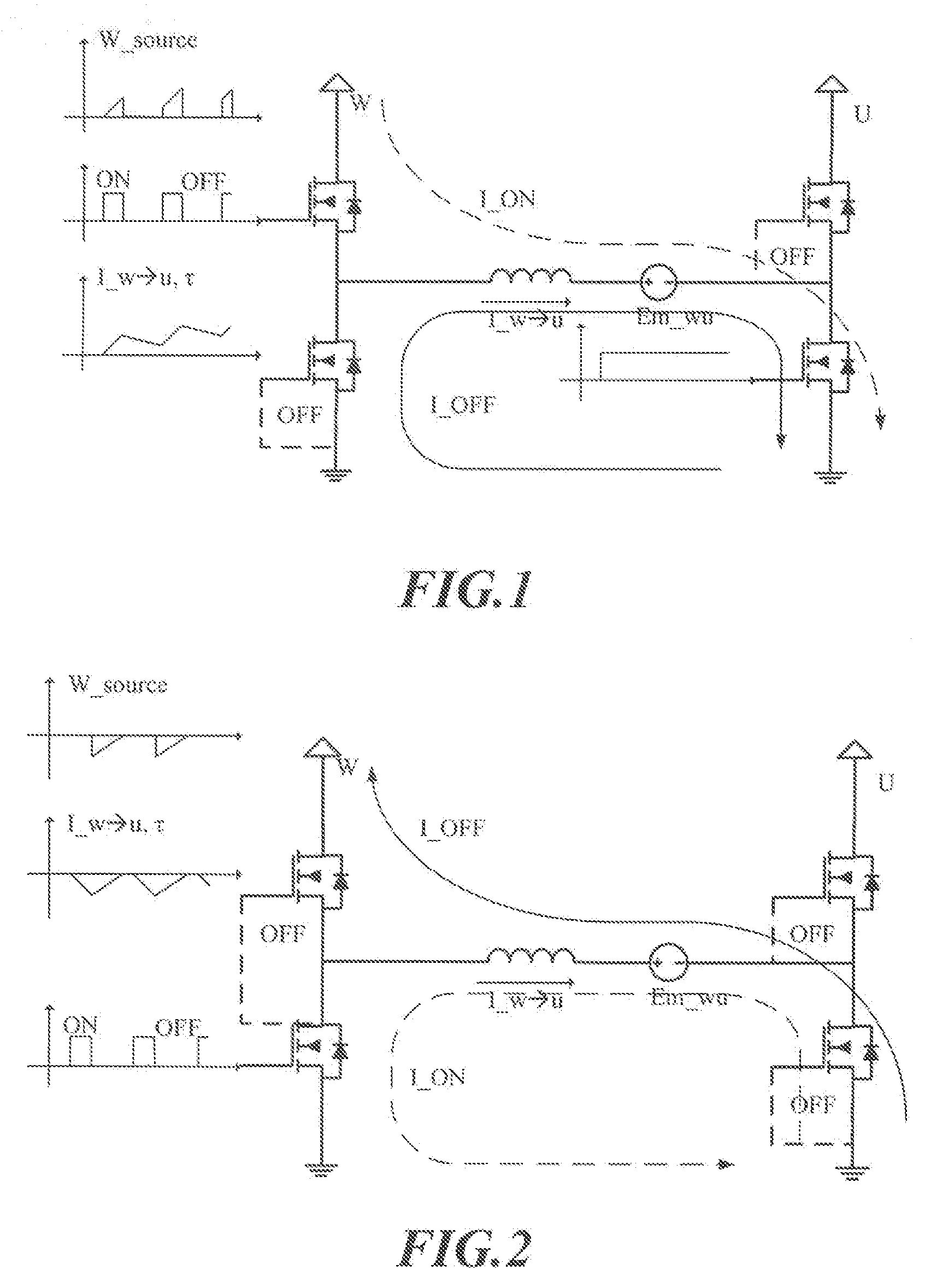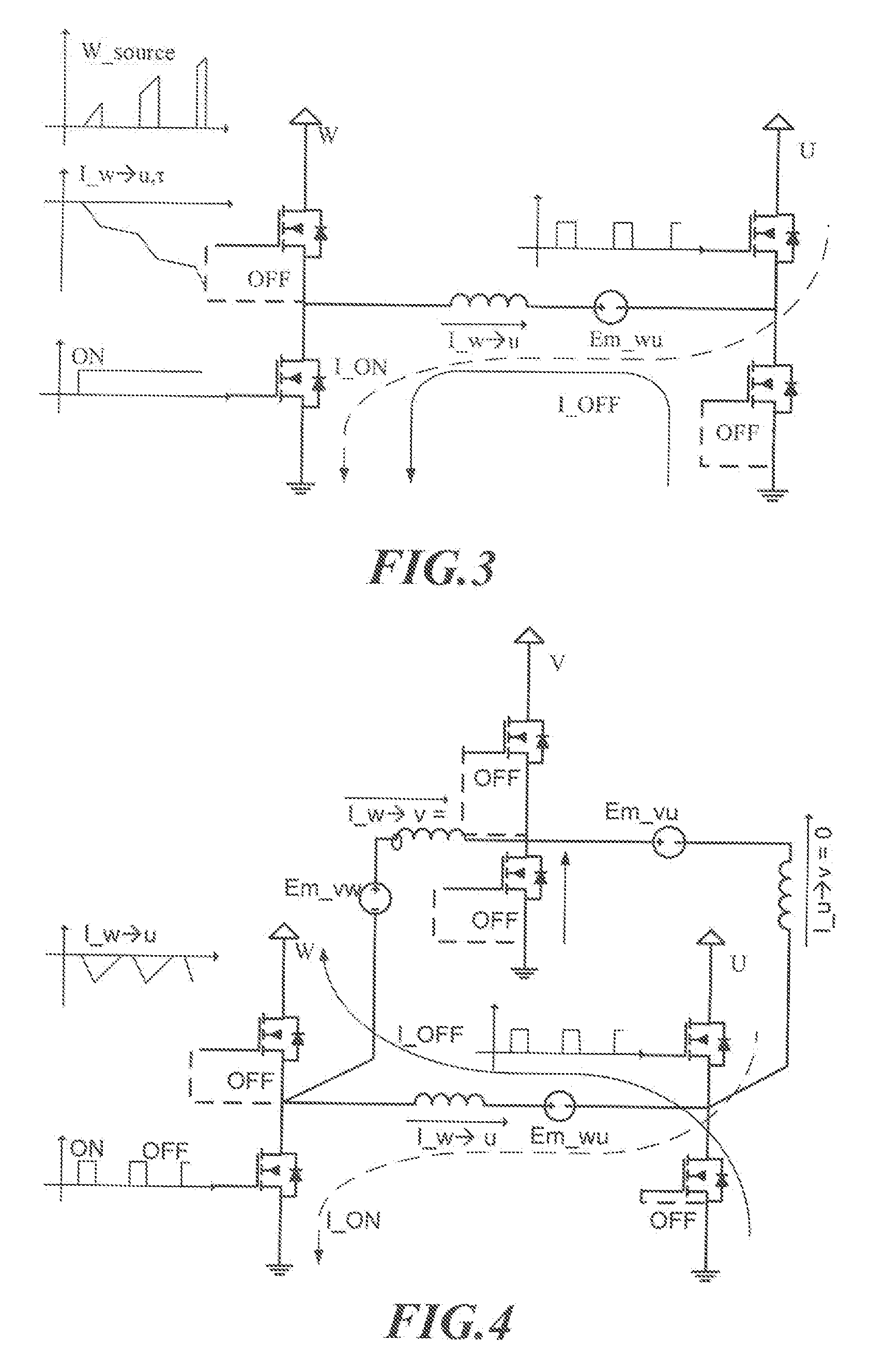Electronic braking and energy recycling system associated with DC brushless motor
a technology of electric braking and energy recycling, which is applied in the direction of motor/generator/converter stopper, dynamo-electric converter control, dc motor stopper, etc., can solve the problems of increasing the current flow through the windings very quickly, the above mechanism is incapable of providing a sufficient torsion for braking of the vehicle, and the electronic braking mechanism is a sort of wasting electronic energy. achieve the effect of smoothly and reliably
- Summary
- Abstract
- Description
- Claims
- Application Information
AI Technical Summary
Benefits of technology
Problems solved by technology
Method used
Image
Examples
Embodiment Construction
[0024]The present invention discloses an electronic braking and energy recycling system associated with DC brushless motor, which can provide an inverse torsion-based braking function by using a conversion of a gate voltages under the condition without altering the conventional motor controller and any hardware configuration of the motor. Further, the inventive system can achieve the maximum recycling ratio for the dynamic power of the motor without being interfered with the multi-phase coil.
[0025]Referring to FIG. 7, the DC brushless motor is shown therein, in which a current is shown as flowing through a coil of the motor with the flow direction thereof also indicated. When the electronic braking system is launched, a controller applies a voltage associated with an inverse mode onto the indicated motor coil. At this time, the current flown through the motor coil has the relationship with other parameters related to the motor (Voltage-Time Law: V_motor×Δt_ON=L_motor×Δi_motor):
(εmot...
PUM
 Login to View More
Login to View More Abstract
Description
Claims
Application Information
 Login to View More
Login to View More - R&D
- Intellectual Property
- Life Sciences
- Materials
- Tech Scout
- Unparalleled Data Quality
- Higher Quality Content
- 60% Fewer Hallucinations
Browse by: Latest US Patents, China's latest patents, Technical Efficacy Thesaurus, Application Domain, Technology Topic, Popular Technical Reports.
© 2025 PatSnap. All rights reserved.Legal|Privacy policy|Modern Slavery Act Transparency Statement|Sitemap|About US| Contact US: help@patsnap.com



